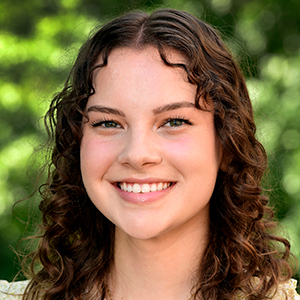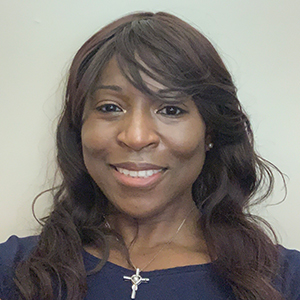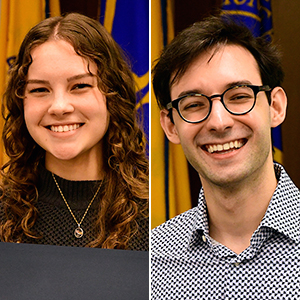Three NIEHS scientists helped high schoolers at Wake Early College of Information and Biotechnologies (WECIB) in Morrisville, North Carolina, tackle a class project focused on problem-based learning (PBL).
Huei-Chen Lee, Ph.D., of the Office of Science Education and Diversity, Robert Petrovich, Ph.D., of the Structural Biology Core Facility, and Thomas Randall, Ph.D., of the Integrative Bioinformatics Support Group, advised the students, who are enrolled in the Biotechnology program at WECIB. Over three visits, the scientists helped the students apply the PBL approach (see sidebar) to develop products that address human health problems of their own choosing.
“For these students, this might end up becoming their career,” said Lee, who as K-12 science education program manager coordinated the partnership between the school and the institute. “This is definitely an important way to have students learn how scientists solve problems.”
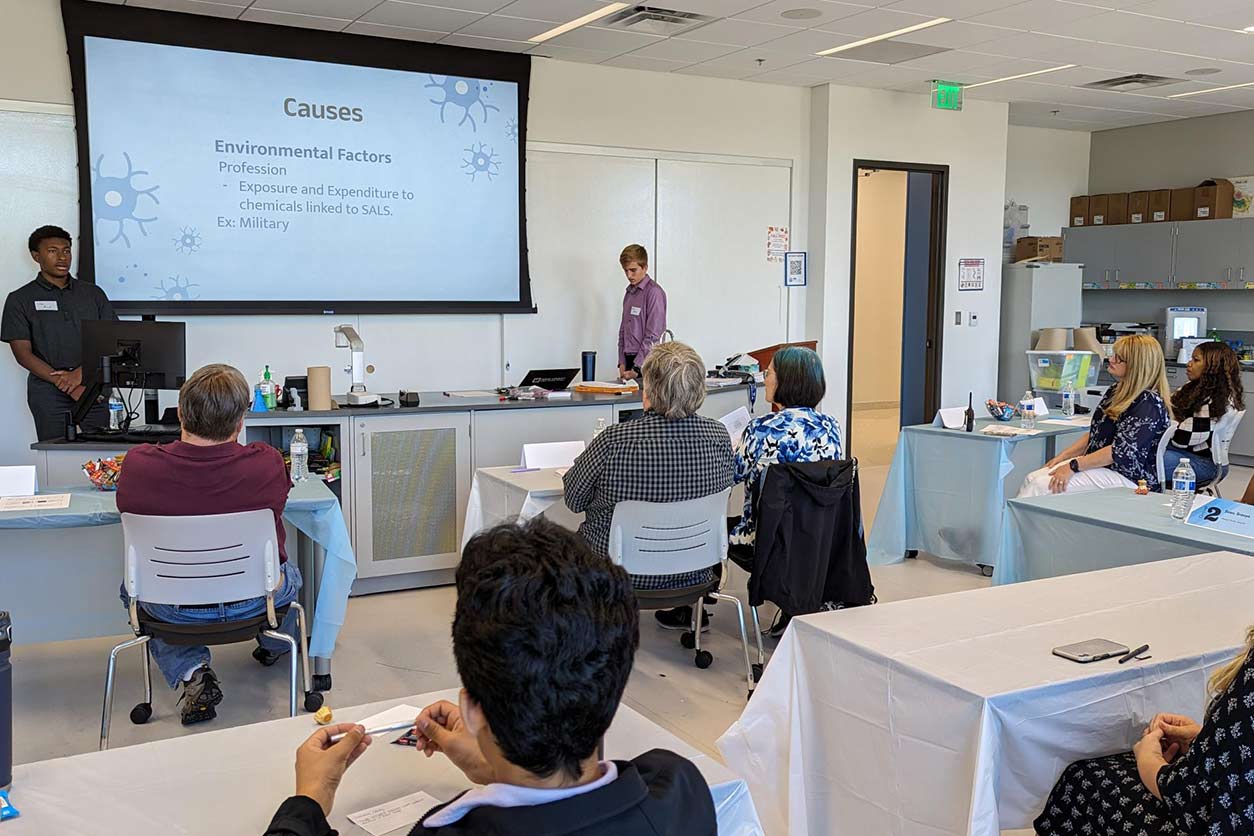
Meeting the team
The partnership began when Kalyani Tawade, who teaches research methodology at the school, reached out to Lee. Tawade planned to teach a unit developed by the National Institute for Innovation in Manufacturing Biopharmaceuticals (NIIMBL) and needed some expert input.
The unit called for six groups of two to three students to identify a real-world problem, develop a biopharmaceutical drug to address it, and create a business model to make that solution a reality. They would then present their idea to a panel of representatives at a poster session. Tawade asked Lee whether scientists at NIEHS could help her students develop, revise, and polish their ideas. Lee recruited Randall and Petrovich, and the team agreed to meet the class Oct. 26 to provide initial feedback on the students’ ideas.
“I think it's worthwhile to go out and talk to high school kids,” said Petrovich. “They're going to be the ones doing science 10 years from now, so it's good to encourage them and give them an idea of what science is really like rather than how science is depicted.”
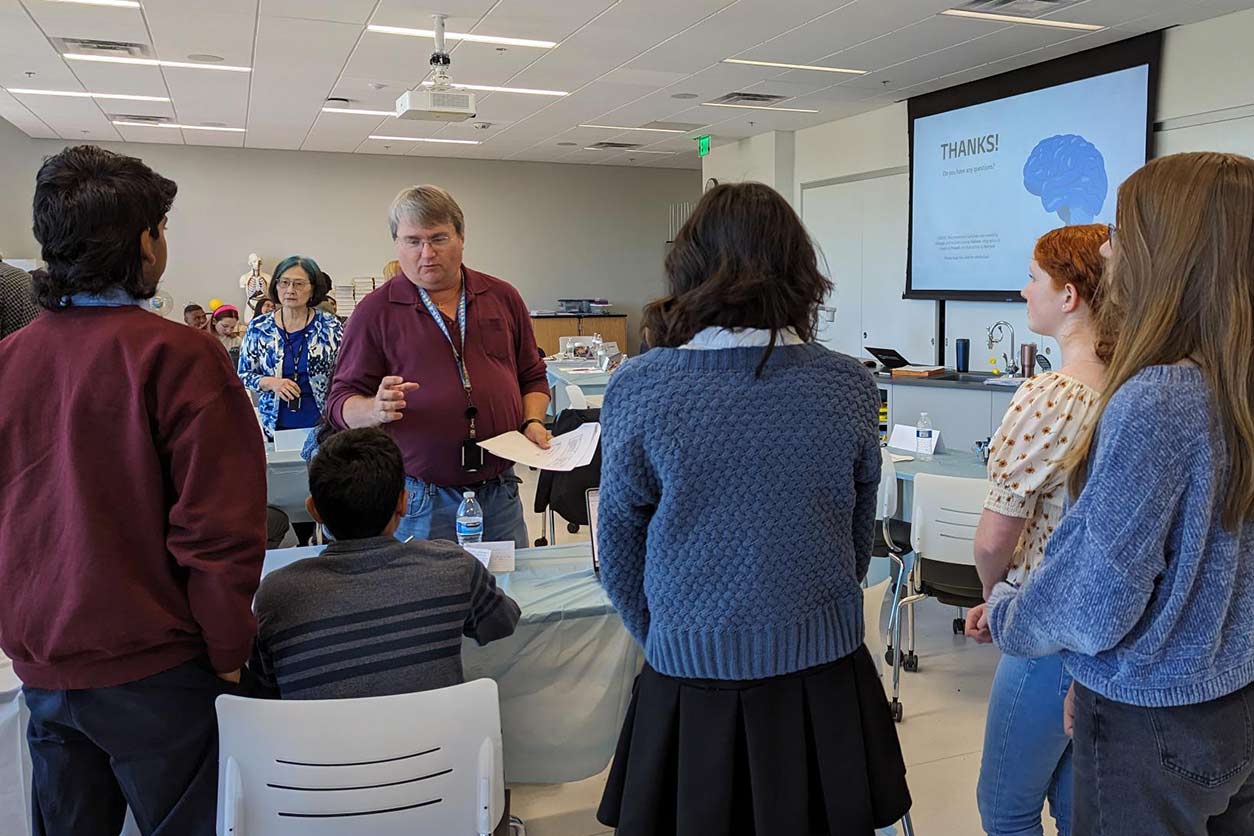
The scientific process
To start their project, students conducted a literature search on a specific human health problem and devised a medicine to address that particular issue. Each group created PowerPoint presentations on their findings and proposed solution.
One group recommended designing genetically modified bacteria that could help people experiencing a fentanyl overdose. Another proposed using proteins and antioxidants to prevent the development of amyotrophic lateral sclerosis (ALS). A third suggested an idea for a therapy to replace the epithelial cells that malfunction in cystic fibrosis.
The scientists visited with each group and challenged them to consider how they could take their ideas to the next level. They asked questions such as how they would get approval for clinical trials, what made their solutions better than the competition, and the environmental issues associated with the manufacturing process.
The scientists returned to the classroom Nov. 1 to provide feedback on the students’ revised proposals. For example, they suggested different systems for drug delivery, and discussed how students could include animal models in their process.
“We went back and told them, ‘Hey, this is difficult; this is what science is all about,’” said Randall. “There's a lot of failure involved even if you have great ideas.”
The final presentation
The students created posters that incorporated the scientists’ recommendations and presented them Dec. 1. WECIB Principal Abby Stotsenberg, Ph.D., as well as representatives from NIIMBL, Eli Lilly, and NC Biotech attended the event. The NIEHS scientists watched their presentations and judged them as they would a poster session at a major scientific conference.
“You could see a night and day difference between their first presentations and their last ones,” said Petrovich. “They obviously had spent a lot more time looking at how they were going to carry out their projects.”
Tawade and Lee plan to duplicate the effort for next year’s class.

(Susan Cosier is a contract writer for the NIEHS Office of Communications and Public Liaison.)





